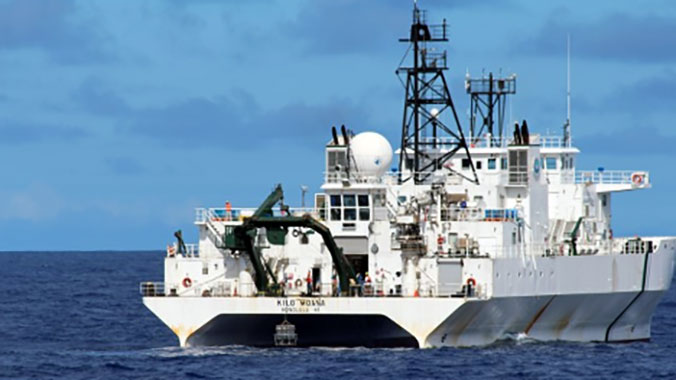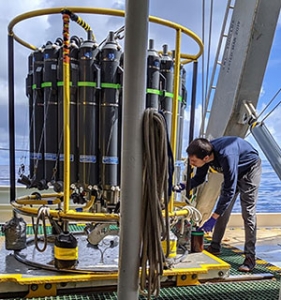
The coexistence of diverse microbes in the open ocean is made possible by staggering the timing of nutrient uptake, according to a study published in Nature Ecology and Evolution by a group of researchers from 13 institutions, including the University of Hawaiʻi at Mānoa.
Microorganisms are highly abundant on the ocean surface, reaching densities exceeding a billion organisms per liter. Collectively responsible for roughly half of global photosynthesis, various groups of microbes coexist while relying on limited nutrients, such as nitrogen and iron. Scientists have been puzzled about how this robust population of ocean microbes persists through relentless competition for scarce nutrients.
"This study shows the true strength of scientific collaboration where the whole is greater than the sum of the parts," said Dave Karl, co-director of the Simons Foundation's Simons Collaboration on Ocean Processes and Ecology (SCOPE) based in the UH Mānoa School of Ocean and Earth Science and Technology (SOEST). "By bringing experts from different subdisciplines to work together we can address complex and challenging ecological questions that no one investigator or laboratory would be able to achieve."
A deep dive into microbial metabolism

The research team was led by Joshua Weitz, a professor at Georgia Tech. The study began in 2015 with scientists in SCOPE sailing to the North Pacific Subtropical Gyre, Earth's largest stretch of contiguous ocean, aboard the UH research vessel Kilo Moana. The research cruise ultimately yielded data on more than 65,000 unique genetic transcripts, metabolic markers and macromolecules over time in multiple types of organisms.
By integrating data on the timing of metabolic processes of different microbes in the surface ocean throughout the 24-hour light cycle—from the transcription of genes for metabolic proteins to the synthesis of compounds such as lipids—the researchers discovered that the coexistence of diverse microbes is shaped by the timing of uptake.
"The pressing matter of survival for many microorganisms at the surface is acquiring enough nitrogen," said Daniel Muratore, a doctoral candidate in Quantitative Biosciences at Georgia Tech and one of three co-first authors of the study. "Since microbes need to acquire nitrogen to function, we might imagine that the particular microbial type that is best at acquiring nitrogen will ultimately win—because it'll be able to grow faster than everything else. And yet that's not the case."
Interestingly, nitrogen uptake and assimilation had some of the most distributed timing throughout the day-with various groups doing similar metabolic processes at different times. Transcription of genes associated with iron uptake, another scarce resource in the open ocean, also took place at different times across species.
With staggered nitrogen uptake, Muratore points out that "instead of having to compete with the whole field, [microbes] only have to compete with the organisms that share that specific shift with them. Perhaps that's one way that the competition is alleviated and can facilitate all of these diverse microbes being able to live off of the same nutrient source."
"Furthermore, this new information on the coordinated activities of microbial communities may help us to better understand and anticipate changes that might occur as climate changes begin to impact, and perhaps disrupt, the normal functioning of microbial life in the sea," said Karl.
This research is an example of UH Mānoa's goal of Excellence in Research: Advancing the Research and Creative Work Enterprise (PDF), one of four goals identified in the 2015–25 Strategic Plan (PDF), updated in December 2020.
This is one of several major projects that are currently underway in SCOPE.






